Topaz Color
Topaz is a beautiful gem that can be found in a variety of rich shades and colors. London Blue Topaz is the most widely known and available variety, but the stone ranges in color from red to pink to brown. Not only does this gem range in color, but it can also range widely in both value and price.
TABLE OF CONTENTS
Topaz Origins
The name topaz is thought to have originated from the Sanskrit word tap, which means to burn. Today, topaz is a stone that is traditionally associated with meanings of calmness and communication. Certain varieties of topaz can be found around the world, but stores of natural imperial topaz can only be found in Ouro Prêto in Brazil. Not only is topaz a gorgeous stone, but it's also incredibly durable as it has a score of 8 out of 10 on the gemstone hardness scale.
Variations of Topaz
As you might know, topaz is highly valued and it comes in a plethora of beautiful variations. The last point is because of its allochromatic qualities, which means color is derived from impurity elements or crystal structure defects. The most common types of topaz are:
- White/Silver
- Australian
- Smokey
- Yellow
- Sherry
- Brazilian
- Sky Blue
- Swiss/Electric Blue
- London Blue/Inky/Steely
This special gem naturally turns red, pink, or violet because of the element chromium. Whereas yellow, brown, and blue variations happen because of imperfections in atomic crystal structure.
White or Silver Topaz
This is a clear, brilliant stone that is perfect for a wide variety of jewelry as well as providing a high-quality base for color-treated stones. This should not be confused with colorless quartz. The main difference between these two gemstones are:
- Quartz is graded 7 on the Mohs hardness scale, whereas topaz is an 8. The harder a gem, the more resistant it is to scratches.
- Crystal formations between the two are different.

Australian Topaz
Hailing from the continent of Australia, this variety of topaz is most often found in shades of clear, pale yellow, or pale blue. Some examples of where this gem can be found are: Oban in New South Wales, Mount Surprise in Queensland, and Flinders Island in Tasmania.
Smoky Topaz
Sometimes mistakenly called Smoky Quartz, this variant can be identified by its signature smokey hue. The gem can range from a dark chocolate color to a lighter, “smokey” tan tone. It is known to be a grounding and protective stone.
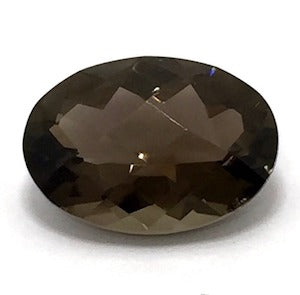
Yellow Topaz
Yellow topaz is the birthstone for the month of November and is a unique choice for a variety of stand-out jewelry pieces. Yellow topaz can range in color from a bright yellow to a richer, more golden hue.
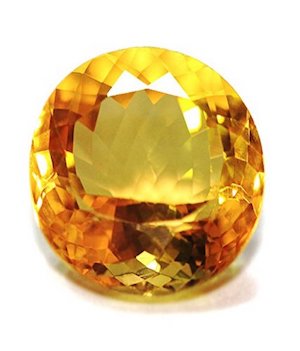
Sherry Topaz
Sherry Topaz takes its name from sherry wine. Much like its namesake, this variant is yellowish-brown to orange-brown in hue. Topaz in this color range is sometimes called precious topaz to help make its value and quality known. Moreover, to prevent confusion with similarly colored but less valuable, and more readily available stones such as smokey quartz.
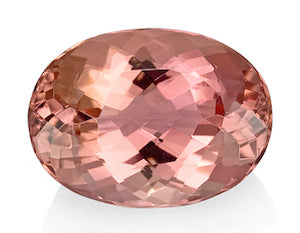
Brazilian Topaz
The most famous producer of topaz in the world is Brazil, and this country produces stones that can range in value from to include stones that are incredibly rare and expensive to more affordable options. Topaz has been mined in Brazil for centuries, and the stones can be found in a wide variety of colors, including the extremely valuable natural blue topaz.
Sky Blue Topaz
This variant resembles the sky on a cloudless day. A delicate, airy type of blue color. Many sky blue topaz on the market were white topaz that were treated by exposing gamma rays. It is a lab secret on how exactly this color is produced. However, generally the stone would be within an environment with a radioactive material (usually Cobalt 60) that emits gamma-rays. This color stone is a nice and cheaper alternative to aquamarine.

Swiss (Electric) Blue Topaz
Swiss Blue Topaz is another high-quality blue gem that is known for its bright, light blue shade. It is different from Sky Topaz because it is deep blue, but not like the London Blue kind. Swiss or electric colored precious gems are made through excessive heat to expose a white topaz to high energy electrons. Excessive heat in a process as such can crack gemstones. Therefore, this high-energy process to achieve uniform, saturated color can take several months. In contrast to London Blue Topaz, Swiss Blue topaz is lighter and less richly saturated.
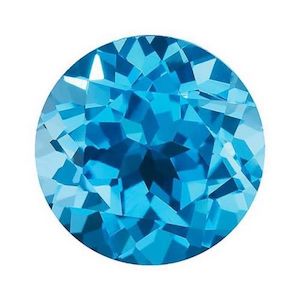
London Blue (Inky, Steely) Topaz
London Blue Topaz is one of the most popular and highly sought after varieties of topaz due to both its value and intense beauty. Though some London Blue Topaz can be found in natural stores, the majority of London Blue Topaz on the market has been heat-treated, which is a natural method that results in top-quality and value London Blue Topaz. One of the more well-known heat treatments for this deep grayish blue color has to involve a nuclear reactor. Color change occurs within this equipment. The electrons and color-producing neutrons penetrate white topaz to create that darker hue that many adore.
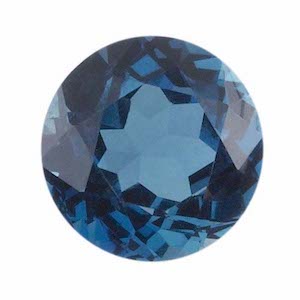
Topaz Pricing
The most important factor when pricing topaz
Topaz is a gemstone that can be purchased at a variety of price points. Many factors can affect the price of topaz, including its color grade, carat, and cut. Color is the most important determining factor in terms of pricing topaz, and customers should be sure to choose stones with high color grades.

Most popular topaz shapes
When purchasing topaz, keep in mind that the most popular shapes are emerald and round, as these cuts work well with the natural properties of the stone. Natural topaz that has been heat-treated is significantly less expensive than natural, untreated topaz.
Lab Created/Treated Topaz
Topaz that is lab synthesized is the most inexpensive option, but cannot be considered a totally natural stone. Gems that are created in a lab are physically the same as the natural varieties, and in many cases lab synthesizing is a way to reduce imperfections and undesirable qualities in gemstones. According to the Geological Institute of America, natural heat-treated blue topaz can be found for just a few dollars per carat, making it an extremely affordable choice for a natural and aesthetically pleasing stone. London Blue Topaz, which is more valuable and used in higher quality jewelry, is significantly more expensive.
Topaz at With Clarity
At With Clarity, we offer a range of blue topaz pieces that can fit into many budgets. We offer stunning, quality pieces such as engagement rings, that include stones that can be up to 3.05 carats! Our rings can be set in 14k white, rose, or yellow gold, which ensures your jewelry will fit your unique style and taste. Engagement rings range in price from $400 to $2,000, depending on the size of the topaz as well as the setting.
FAQs
What color is topaz?
Topaz has a wide color range and can be found in a variety of shades, such as blue, green, yellow, orange, red, pink, and purple. Blue happens to be one of the most popular topaz colors, and many times, the desired shade is achieved by heat-treating colorless topaz.
What birthstone is topaz?
Topaz is the November birthstone. While this gem is available in a range of colors, blue topaz is the one that’s commonly considered the November birthstone.
How much is topaz worth?
Topaz, as a gemstone, is highly valued. Many factors can affect the price, including its color grade, carat, and cut, with color being the most important. Pink and red colored topaz stones are the most valuable. These are closely followed by orange and yellow topaz stones, which cost over $1000 for stones that are 10 carats and above. Blue topaz costs $25/per carat.
What does topaz symbolize?
Topaz is traditionally associated with calmness and communication. Yellow topaz symbolizes love and affection and is also believed to represent honor and strength. Blue topaz, on the other hand, symbolizes loyalty and righteousness.









